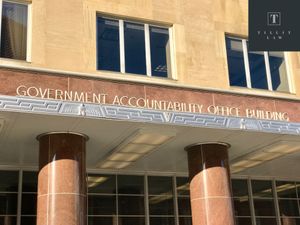Government officials often direct contractors to perform contract work in a specific manner not detailed in the contract. If such orders increase the scope of performance beyond the specifications of the contract, they may be construed as constructive changes. While such orders are generally given on the belief that they naturally fall within the scope of performance, they may nevertheless expand the scope of performance beyond the stated specifications. In such situations, contractors may be entitled to compensation for constructive change even if the accompanying government directive expressly states that it is not meant as a change order. Upon receipt of such directives, contractors must compare the new requirements with their existing contract specifications carefully and raise any scope creep issues promptly. Such a proactive approach may prove crucial in avoiding potential disputes and aid the contractor’s arguments in case of litigation.
Additional performance specifications not previously described in the contract may have the effect of increasing the scope of performance and add to costs incurred by the contractor. In such cases contractors may file a claim for increased costs. Such a claim was before the Armed Services Board of Contract Appeals (ASBCA) in ASBCA No. 49648 pursuant to a contract for grounds maintenance services at the Arlington National Cemetery in Virginia. Under the contract, the contractor was required to furnish all labor, equipment, and materials for grounds maintenance supervision. While the contract specifications prohibited any contractor employees, vehicles, or equipment from infringing upon any government ceremonies or visitations, they did not expressly specify the distance contractor employees would have to maintain to comply with the no-infringement provision. Notably, the government had omitted provisions describing the exact no-infringement distances to maximize competition and avoid artificially high bids.
Consequently, in preparing its bid, the contractor assumed 100 yards would be sufficient distance to avoid infringing upon government ceremonies or visitations. However, contrary to this assumption, during performance the contractor was notified that the no-infringement provision required its personnel to maintain distances of up to 300 yards for routine interments and an even greater distances when operating motorized equipment. The distances varied widely during funerals based on occasion, rank, and religion of the deceased, among other factors. In fact, for some special ceremonies, such as presidential visits or Memorial Day ceremonies, entire sections of the cemetery were closed off to the contractor. As a result, the contractor was unable to perform grounds maintenance cycles as scheduled and was compelled to incur overtime expenses for the timely completion of the work. Notably, while the contractor made claims for additional compensation, it did not make claims with respect to increased costs incurred due to Memorial Day and Veterans Day floral items sweeps.
In response to the contractor’s claim for increased costs, the ASBCA first reviewed the reasonableness of the contractor’s interpretation of the no-infringement provision of the contract. In ruling on the relevant portion of the claim, the ASBCA found the contractor’s assumption of maintaining 100 yards to avoid infringement on government visitations and ceremonies as reasonable. The ASBCA made this determination considering the government’s omission of specific instructions in the solicitation and pointed to a lack of evidence in the record that would suggest a different outcome. Similarly, the ASBCA found that the contract did not convey that the no-infringement distances would vary during the contract performance. Consequently, the government could not close off cemetery sections to the contractor or vary the distances to be maintained from one occasion to the next without compensating the contractor for additional costs incurred due to these added specifications. Since detailed specifications required for compliance with the no-infringement provision were not provided, the ASBCA determined that government orders to maintain specific distances in excess of the contractor’s assumption constituted constructive change. Considering these determinations and findings, the ASBCA ruled that the contractor was entitled to equitable adjustments for the additional costs incurred.
Technical assumptions made by contractors during the formation phase of the contract, including due to lack of specifications in a solicitation should be clearly articulated in writing to avoid inadvertent increases in scope and cost disputes during performance. Contractors should keep detailed records of all government orders that may expand the scope of their contracts, including the instructions at issue and their associated costs. To demonstrate constructive change, the performance rendered under the contract should be compared with what was initially contemplated during formation to evaluate the impact of government orders. Additionally, contractors should look to prove that the government intended to order changes that increased the scope of performance. Government orders requiring performance in a specified manner not directed by the contract should always be flagged to support potential arguments requesting a constructive change.
This Federal Contract Claims Insight is provided as a general summary of the applicable law in the practice area and does not constitute legal advice. Contractors wishing to learn more are encouraged to consult the TILLIT LAW PLLC Client Portal or Contact Us to determine how the law would apply in a specific situation.





